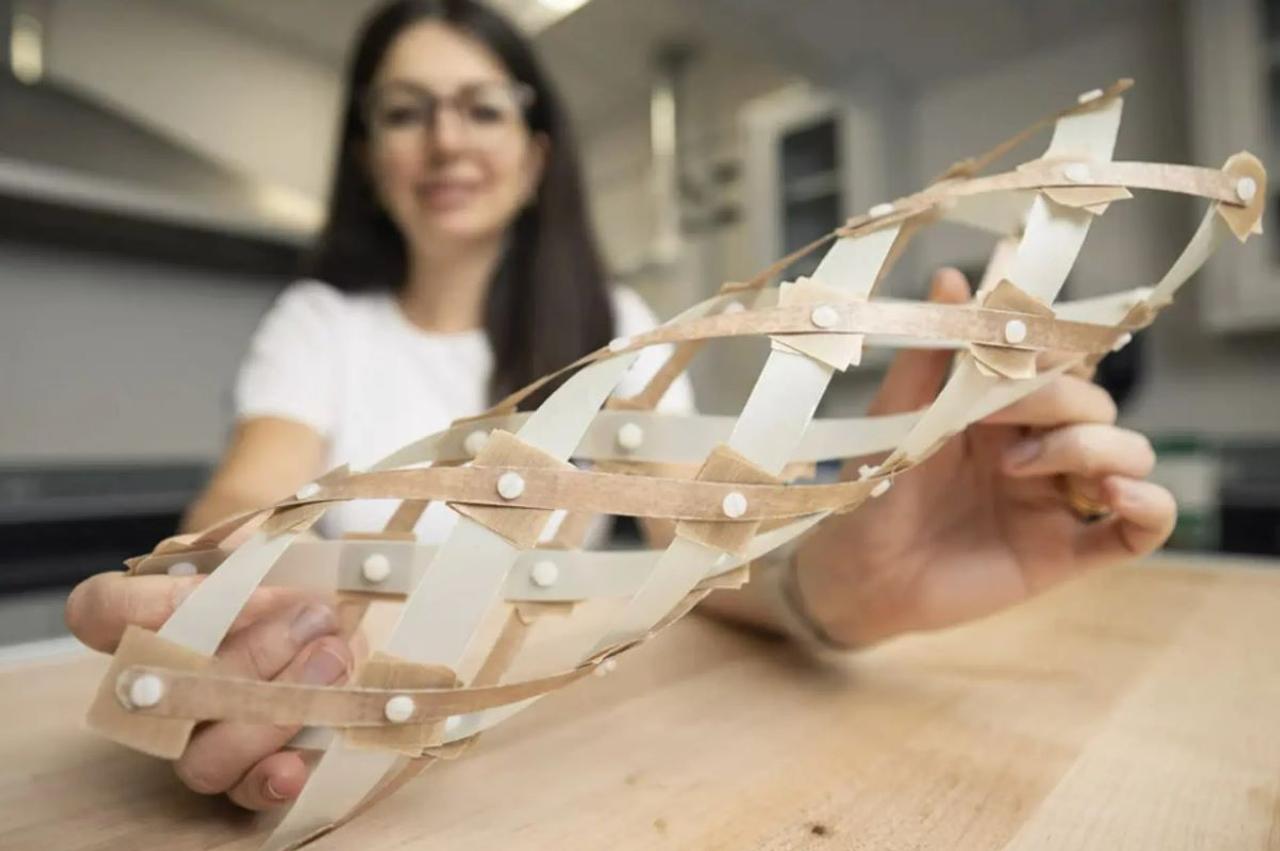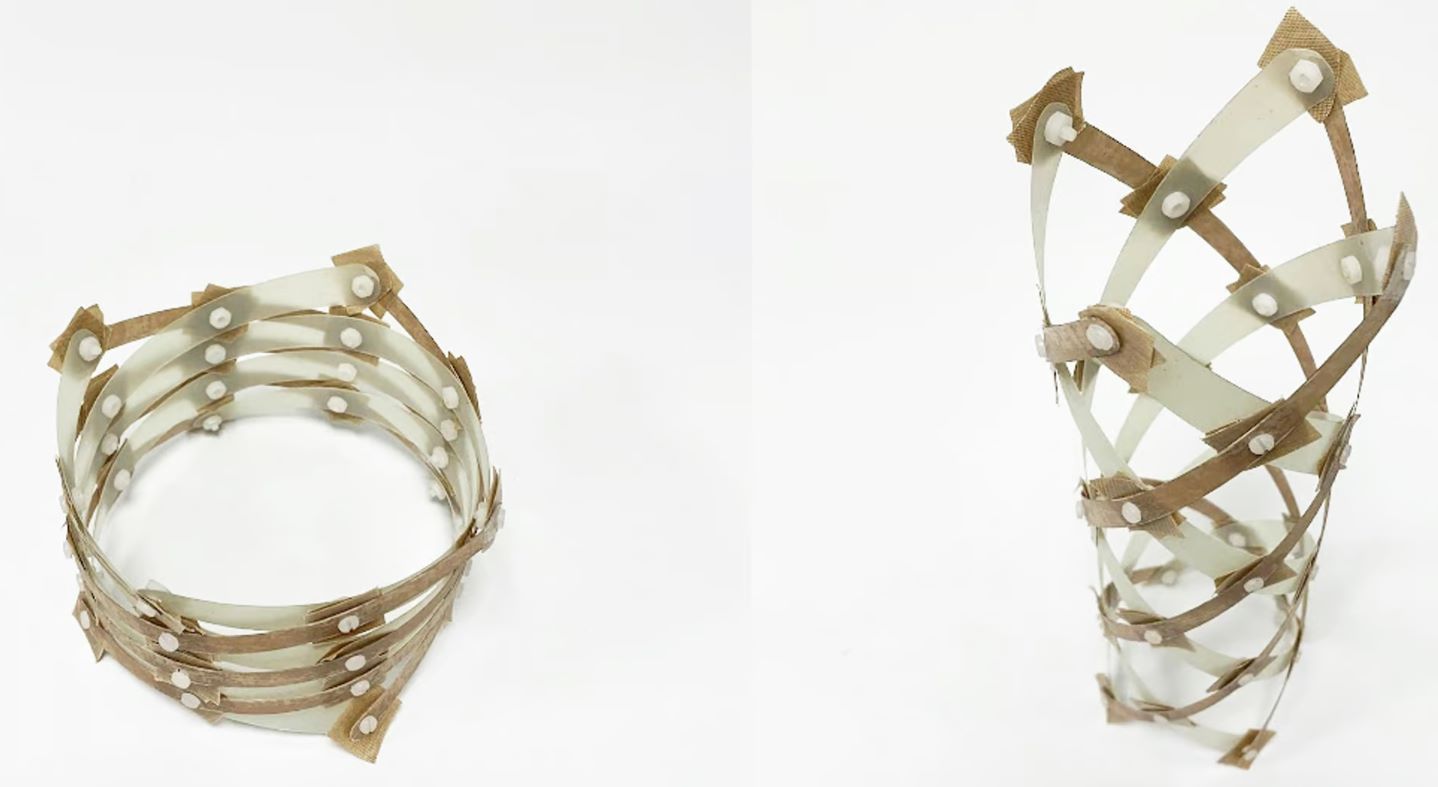
Stanford scientists have created an ultralight spiral antenna that can replace traditional satellite dishes
Usually, relatively bulky and expensive satellite dishes have to be transported and installed to establish communication in war zones or natural disasters, but soon a simple tubular antenna made of woven strips will be able to replace the “dish”.
The prototype device, developed by scientists at Stanford University, is a form of a so-called spiral antenna. Typically, this type of antenna consists of one or more wires wound in a spiral (e.g., corkscrew) around a central support mast.
The new “bistable four-way spiral deployable antenna” eliminates the support and replaces the wires with strips of conductive fiber composite material – they are wound together in a spiral to form a hollow cylinder. This cylinder can be extended into a long, slender configuration with a height of approximately 305 mm or lowered down to form a ring with a height of approximately 25 mm and a width of 127 mm.

When connected to electronics such as a receiver, grounding plate, and battery, the antenna emits a low-power signal in all directions, providing radio communication with ground team members. In the short state, it sends a powerful signal in a specific direction, enabling satellite communication. The frequencies that are in any state are determined by the exact dimensions of each individual antenna.
Another thing that helps simplify setup is the bistable design of the device. This means that when it is pulled or pushed manually, it automatically assumes the desired configuration, so there is no guesswork as to whether it was deployed correctly, whether at a disaster site or on the battlefield.
“Our lightweight antenna can easily switch between two operating states. It is able to do more with minimal cost in areas where there is no communication,” said Prof. Kuznetsova. Maria Sakovska.

